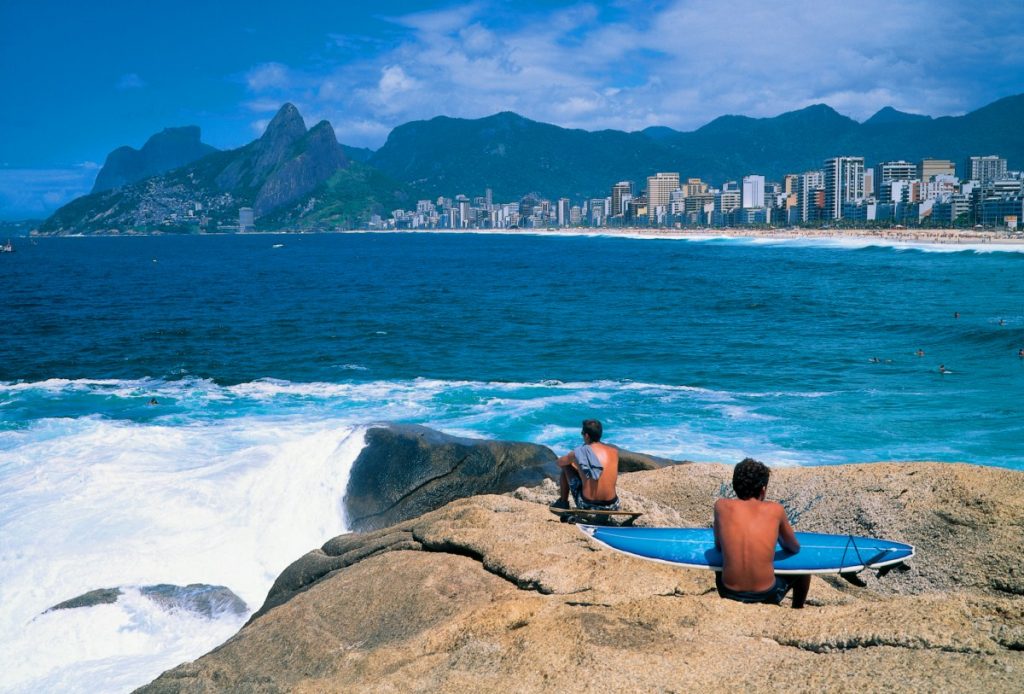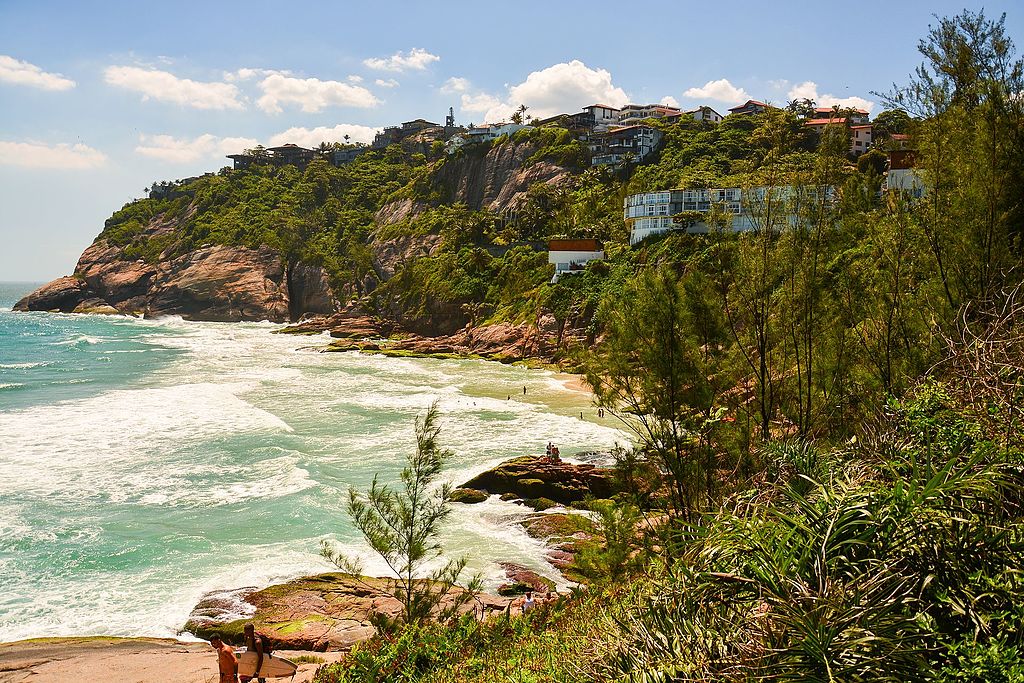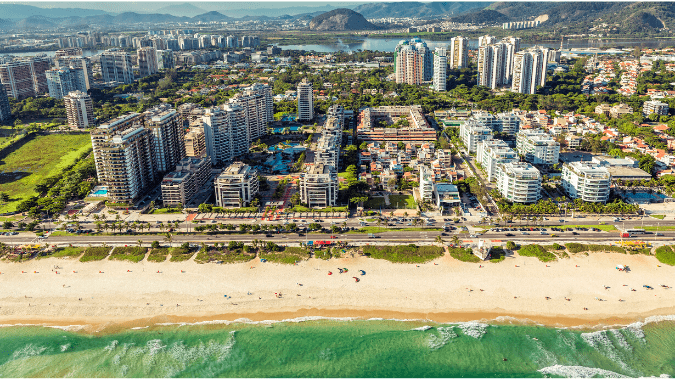Some of Rio de Janeiro’s more famous, lively beaches are right next to Rio’s trendiest neighborhoods, while others are perfect for a secluded getaway. We round up the most stunning beaches in Rio De Janeiro, listed in order of east to west along its shoreline.
Contents
The Most Stunning Beaches In Rio De Janeiro
1. Copacabana
Being one of the world’s most sought after beaches means the Copacabana is chockablock with hotels, restaurants and beach-side kiosks to cater to the annual mass wave of tourists flocking in. Weekends can get crowded on sunny days, and local visitors and tourists often find themselves jostling for space at peak season. However, the energetic atmosphere is contagious, and with various live samba acts playing on Copacabana’s wave-patterned promenade, this beach brings life and music to all its visitors. Sports along the eight-kilometer stretch are a permanent fixture with football, volley, surfing and beach tennis being the most popular among locals.
2. Ipanema
Just past Copacabana, you’ll reach the decidedly more upscale neighborhood and beach Ipanema, made famous by the catchy tune “The Girl from Ipanema.” This famous beach truly seems to be teeming with tan and lovely girls, as well as a slew of well-toned and tanned men. Yes, Ipanema is where you’ll want to see and be seen. Meanwhile, countless vendors walk the beach, selling what seems like an endless array of things to buy, like bathing suits, beers, beach towels, books and even coconuts.
The waterfront action barely ceases here. Be prepared to encounter volleyball games, soccer and water sports like surfing and wakeboarding. The most vital thing you’ll want to do at Ipanema is to soak it all in: the swath of sands, the 2 mountains towering above the end of the beach, the gorgeous locals, the hustle and bustle of beach action. Make like a local and grab a cold beer while you stretch out on the sand; vendors stroll the beach incessantly proffering the cold stuff.
3. Praia do Arpoador
Arpoador is one of the most stunning beaches in Rio De Janeiro which tucked in at the far end of Ipanema Beach, and its rolling waves make it perfect for beginner and experienced surfers alike. There are many beach kiosks that offer surf lessons, with the majority of instructors speaking English and patient and welcoming in true Brazilian style. It’s a perfect way to embrace the Carioca lifestyle. This beach is famous for its spectacular sunsets, so take a seat among the other beachgoers on Arpoador Rock and make sure to join in with the unified cheers and claps as the last of the sun’s rays disappear behind the jagged peaks of the Dois Irmãos (Two Brothers).
4. Joatinga
Once you’ve captured the vibes of Rio de Janeiro at Copacabana and Ipanema, you might want to escape from the crowds to more secluded coasts. Joatinga can be a perfect go-to, which has somewhat become an upscale resort area with a collection of luxurious villas and resorts dotting the surrounding rugged cliffs.
You can access the 300-metre long coastal stretch Joatinga’s beach only during low tide. A paddle out from the beach across azure waters treats you to some great swells for surfing and bodyboarding.
5. Barra da Tijuca
The more recently developed beach resort area of Barra da Tijuca offers great alternative beach scenes southwest of Copacabana and Ipanema with its long and beautiful length of white sand that stretches over 17 km.
Barra is an easy half-hour ride on the metro line from downtown Rio and offers all the scenes and flavours that the coastal city is famous for. As Rio’s longest beach, you can find a mixed crowd ranging from a variety of water sports including surfing and windsurfing to beach soccer.
6. Ilha Grande
Ilha Grande (Big Island) was once used as a quarantine place for people with leprosy. When the last hospital there closed, the island was abandoned and remained wild and uninhabited for decades. Once it was rediscovered as a prime destination, efforts were made to keep development to a minimum in order to preserve the island’s fauna and flora, including endangered species like the brown howler monkey.
Ilha Grande’s forests are pristine; the island has no roads, and no vehicles of any kind are allowed. To reach the beach, visitors must first take a boat to Vila do Abraão, the main village on the island. From here, you can reach the island’s many beaches either by boat or via a hike through tropical forest.







